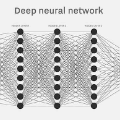Owing to their remarkable learning (and relearning) capabilities, deep neural networks (DNNs) find use in numerous real-world applications. However, the learning of these data-driven machine learning models is generally as good as the data available to them for training. Hence, training datasets with long-tail distribution pose a challenge for DNNs, since the DNNs trained on them may provide a varying degree of classification performance across different output classes. While the overall bias of such networks is already highlighted in existing works, this work identifies the node bias that leads to a varying sensitivity of the nodes for different output classes. To the best of our knowledge, this is the first work highlighting this unique challenge in DNNs, discussing its probable causes, and providing open challenges for this new research direction. We support our reasoning using an empirical case study of the networks trained on a real-world dataset.
翻译:海报:深度神经网络中偏差、节点敏感性和长尾分布训练之间的链接
Translated abstract:
由于其出色的学习(和重新学习)能力,深度神经网络(DNN)在许多实际应用中找到了应用。然而,这些数据驱动的机器学习模型的学习通常与用于训练它们的数据一样好。因此,具有长尾分布的训练数据集对DNN构成了挑战,因为训练在此数据集上的DNN可能会在不同输出类别中提供不同程度的分类性能。虽然现有的工作已经突出了这些网络的总体偏差,但本文确定了导致节点对不同输出类别敏感度不同的节点偏差。据我们所知,这是第一篇突出DNN中这种独特挑战的工作,讨论了其可能的原因,并提出了这个新研究方向的开放性挑战。我们使用针对真实数据集上训练的网络的经验案例来支持我们的推理。



